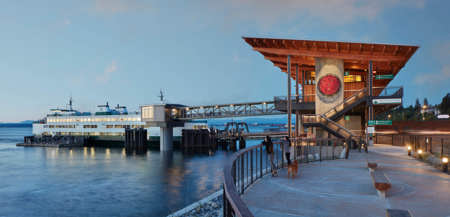

Mukilteo Multimodal Ferry Terminal
LMN Architects
Client: Washington State Department of Transportation & Washington State Ferries
The ferry terminal provides critical safety and efficiency improvements to the West Coast’s busiest ferry route for vehicles. The building’s longhouse form, derived through close collaboration with Coast Salish Tribes, enriches the passenger experience, streamlining circulation and managing large patron flows with intuitive wayfinding. Tribal cultural motifs created by local Native American artists Kate Ahvakana, Joe Gobin, and James Madison are displayed throughout the terminal, creating a strong sense of place. The project significantly improves regional mobility while incorporating the cultural influence of the community and paying homage to the site’s historic roots. The ferry terminal improves numerous shortcomings of the existing terminal built in 1957 while looking to the future with a sustainable approach and has become a new model for how local, state, and tribal governments can work together. The project represents what is possible when the community and a multidisciplinary team collaborate in support of a shared vision.